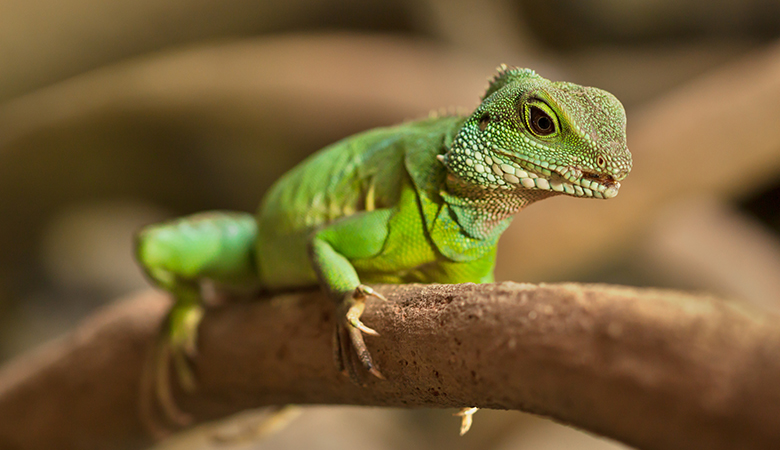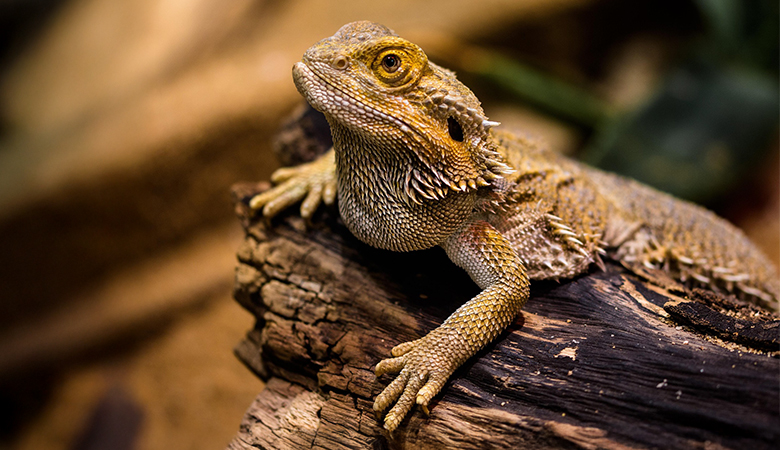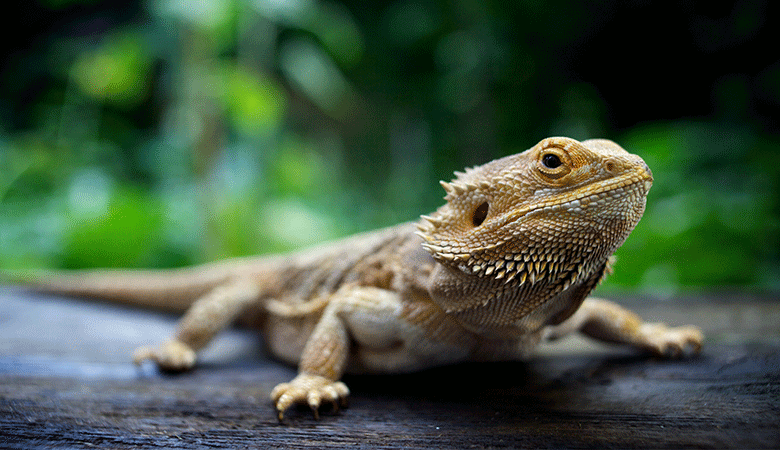Care and Housing of the Bearded Dragon
The Bearded Dragon is a curious ground-dwelling reptile that also enjoys climbing. A spacious terrarium is therefore essential. For one adult animal, a minimum size of 120 × 60 × 60 cm is recommended, although larger is always better. Furnish the enclosure with different heights, basking spots and hiding places to stimulate natural behavior. A proper heat and light setup is indispensable. Combine a UVB lamp with a heat lamp to create different temperature zones inside the terrarium. Under the heat lamp, temperatures should reach 38–42°C so the Bearded Dragon can warm up, while the opposite side should be cooler (26–30°C) so it can cool down. At night, temperatures may drop to around 20–22°C. The UVB lamp supports the production of vitamin D₃ and proper calcium absorption, while the heat lamp or heat stone helps the Bearded Dragon regulate its body temperature.
Enclosure Setup
Use a natural substrate such as special terrarium sand, wood chips, or a mixture of sand and clay. Add rocks, branches and hiding spots to provide climbing and resting areas. Always provide a low, wide water dish for drinking and occasional bathing.
Care
Bearded Dragons shed regularly; do not actively pull off shedding skin, but support the process through proper humidity and light misting if needed. The terrarium must be cleaned regularly, with daily removal of food remains and droppings. In addition, thoroughly clean the entire enclosure weekly.






